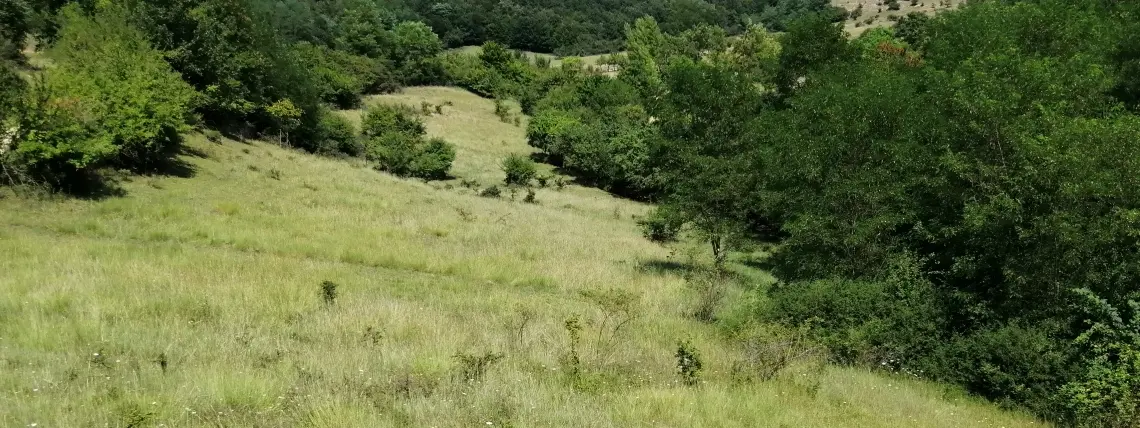Corvin Castle, also known as Hunyadi Castle or Hunedoara Castle, is a Gothic-Renaissance castle in Hunedoara, Romania. It is one of the largest castles in Europe and is one of the seven wonders of Romania.

Corvin Castle, by Carcea Daniel, CC BY-SA 3.0 ro
The castle was commissioned by John Hunyadi, the Voivode of Transylvania, in 1446. He wanted to remodel the former fortress built by Charles I of Hungary. The castle was originally given to John Hunyadi's father, Voicu (Vajk), by Sigismund of Luxembourg, King of Hungary and Croatia, as a settlement in 1409. After the death of Johann Hunyadi in 1456, work on the palace stagnated. From 1458, new contracts were awarded for the construction of the Matia wing of the castle. In 1480, work on the castle ceased completely and it was recognised as one of the largest and most impressive buildings in Eastern Europe.
The castle has three large areas: the Knights' Hall, the Dining Hall and the spiral staircase. The halls are rectangular and decorated with marble. The dining hall was used for ceremonies or formal receptions, while the knights' hall was used for parties. In the 17th century, new additions were made for aesthetic and military reasons. Aesthetically, the large new palace was built overlooking the city. It is a two-storey building that houses living chambers and a large living area. Two new towers were built for military purposes: the White Tower and the Artillery Tower. The outer courtyard was also added for administration and storage.
The castle is open to the public every day, Mondays from 12 noon to 8 pm and Tuesdays to Sundays from 9 am to 8 pm. It is owned by the Ministry of Culture and is currently used as a museum.
There are many legends associated with the castle. One of them relates to the coat of arms of the Corvin family: a raven holding a golden ring in its beak.
It is said that John of Hunedoara was the illegitimate son of Sigismund of Luxembourg, the King of Hungary, and Elisabeth, a beautiful woman from the land of Hateg. To protect her, the king married her and gave her a ring for the unborn child. During a journey, the ring was forgotten during a rest stop. A raven, attracted by the brilliance of this object, steals the ring and tries to escape with it.
The child John of Hunedoara takes a bow and arrow and catches the raven to retrieve the ring. Later, when he grows up and reaches the royal court, he tells the story and the king, impressed, decides that the symbol of the Hunyadi family would be the raven with a golden ring in its beak.

Transylvania is surrounded by the densely forested mountains of the Carpathians like a huge castle created by nature. This region is home to medieval towns and unspoilt villages.
But behind this idyllic facade lies a dark secret that terrifies the locals. For Transylvania is also home to vampires, the sinister creatures of the night that feed on the blood of the living.
What sounds like fantasy and fiction is actually a real place, a region in central Romania. In the Transylvanian forests, there are secrets and magic that seem to be out of this world. Faint lights glow between the trees, eerie, whispering voices can be heard on the wind. Travellers who have ventured too deep into the forest have never been seen again...
The Gothic cemeteries full of eerie crypts and tombs may harbour the remains of undead creatures. The mysterious and magical symbols on the tombstones show the fear of the population and their attempt to block the path of the sinister, cruel beings into our world.

You are supporting a special nature and animal conservation project in Transylvania. We plant native deciduous trees - original tree species such as robinia, oak and maple. We are actively committed to the protection of flora and fauna. The land for our land donations may not be used commercially.
This means that trees, shrubs, grasses, flowers, herbs, mosses and fungi can develop undisturbed. At the same time, the fauna also develops with numerous different species: Insects, reptiles, amphibians as well as small mammals and birds find a safe habitat here.

The property's own spring and the stream on the property round off this habitat. They provide undisturbed access for all the fauna from the surrounding area and the opportunity to obtain fresh, clear spring and mountain water. This is particularly important during the long, hot and dry Transylvanian summers.
Roe deer, deer, foxes, wild boar, badgers, martens, frogs, toads and amphibians, small rodents and reptiles such as lizards and slow worms from the surrounding woodland areas make use of this opportunity and regularly visit the fresh water source.
This project actively contributes to the preservation and expansion of valuable ecosystems.

The land gifts are located on this property.
Don't wait any longer and take your own piece of Transylvania!